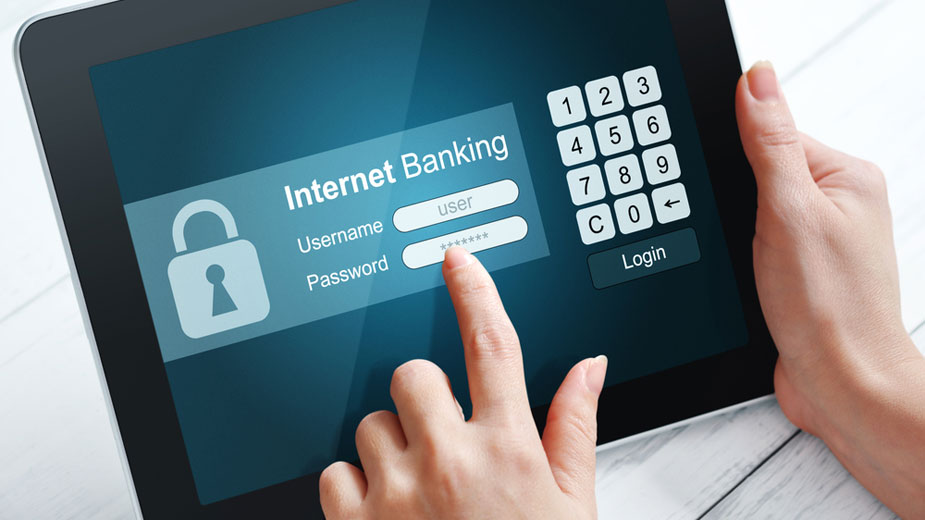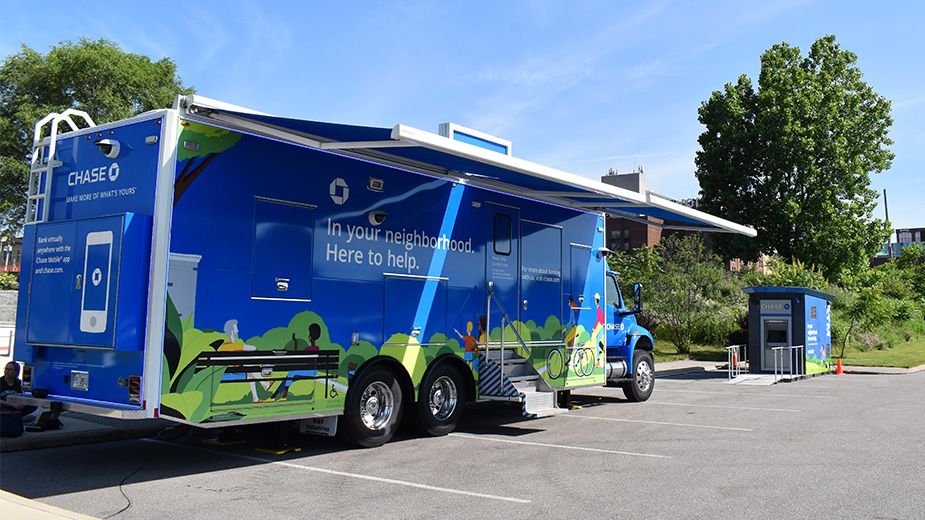Web Complements, Doesn’t Replace Bank Branches
YOUNGSTOWN, Ohio — It wasn’t that long ago – only a third of a century – that you had to go to the bank or credit union to cash a check, make a deposit, add to your savings account, apply for a mortgage or a car loan.
Bank offices opened at 10 a.m. and closed at 3 p.m. – sometimes reopening Friday nights – because tellers posted transactions by hand when customers handed over their deposit slips and passbooks beneath the metal bars of their cages.
Drive-thru lanes with their pneumatic tubes, a recent advance in technology, were as close as you could conduct business without going inside the banks with facades of bricks and mortar.
ATMs were both small in number and unreliable. Bank-by-phone was in still in development.
Today consumers and businesses need never visit an office. They can do anything 24/7/365 – open an account, apply for a loan, transfer funds between their accounts and to accounts at another financial institution, pay bills. Anything, that is, except deposit or withdraw cash and obtain a cashier’s check. “Or notary service,” says Barbara J. Radis, senior vice president for retail banking at the Home Savings and Loan Co.
For those three services, the customer must still visit a branch, says PNC Bank Executive Vice President Drew Martin, its market manager for northern Ohio. “Branches still matter,” he says, not simply to obtain currency and coin but meet with bankers about how to best manage their finances.
Paying bills online is one of the most popular features of web-based banking, Martin says, citing PNC’s Virtual Wallet, “a phenomenal feature that makes it very easy for customers to monitor and manage their accounts.”
Says Huntington Bank Executive Vice President Mark Sheehan, its director of payments and channels, “We see digital [web-based banking] as a way to strengthen the bonds with our customers. They should be allowed to bank as they want to, even if they choose only a mobile channel.”
Today landline telephone banking is as passé as a savings passbook, replaced by web-based banking.
Huntington has discontinued it, Sheehan says, but the Middlefield Banking Co. still offers it, says Deborah Burn, a vice president for commercial lending.
Mention telephone banking to Danielle Cantrell, vice president at Cortland Banks, and her reaction is, “We have an app for [smart]phones.” Cantrell is Cortland’s retail banking manager. Cortland no longer offers landline telephone banking either.
Indeed, using a PC at home is giving way to tablets and smartphones, also known as mobile devices.
“Use of desktops [personal computers] has declined as mobile devices have increased,” says Mike Kurish, president of Associated School Employees Credit Union, based in Austintown.
One function mobile devices can’t perform, he notes, is print out statements. Also, while some devices allow the user to pull up images of cleared checks, such images are small and hard to read.
The executives at the three other banks also interviewed for this story said they, too, do not charge their consumer customers for banking online. Some, such as PNC, encourage its use by charging a fee for mailing monthly statements to the customer’s home.
Younger consumers are more receptive to using their mobile devices to conduct their banking than their parents or grandparents but the gap is narrowing. Last March the Federal Reserve reported that 67% of those living in the United States ages 18 to 29 use mobile banking, up from 45% in 2011.
And where only 5% of those ages 60 and older did so in 2011, 18% did so in 2015. The number of all residents nearly doubled over those five years, to 43% from 22%. It doubled to 58% among those 30 to 44.
The 24/7 availability of the many online financial services one can use almost anywhere, their ease of use, how quickly one can transact business, the accuracy, the security – it’s no wonder people have taken enthusiastically to web-based banking.
Those who don’t fall into two broad categories. They worry about their accounts being hacked – 45% cited security concerns in an SNL Financial consumer survey conducted in spring 2015 – or they see no benefit to or were unaware of whether their banks offered mobile banking.
More than 40% who bank on a PC at home said they didn’t use a mobile device because their PCs met their needs.
Banking online is secure and becoming even more secure, all interviewed agreed. PNC Bank in Pittsburgh announced last month is looking to hire 300 more in technology, 100 of whom would be in cyber security/infrastructure.
Of cyber criminals’ round-the-clock efforts to hack computer systems, PNC Financial Services Group’s chief technology officer, Deborah Guild, observes, “It’s like the Wild West. This is how they rob banks today.”
“We require strong passwords,” says Sam Kirsch, director of digital channels and payments at First National Bank of Pennsylvania. By the end of the year, First National Bank expects to have the user’s fingerprint replace his password when the customer initiates a transaction on his smartphone. This is in addition to the fingerprint ID Apple and Microsoft already offer as a security measure to operate some functions on their mobile devices.
Huntington will offer “Touch ID in late summer or early fall,” Sheehan says. Touch ID allows the customer to simply touch the screen on his iPhone or Android to instantly learn account balances; no transfer of funds will be allowed. That requires meeting the next level of security.
Home Savings Vice President Robert Steele, its director of retail operations (which includes computer security) says his bank already has fingerprint ID verification on tablets and smartphones.
It’s especially important on smartphones, Steele explains, because people often set them aside where others have access to them. A cyber thief can watch the user enter his password and steal the mobile device. Fingerprint ID should foil such efforts.
First National Bank sees fingerprint ID as an enhancement to security for its “Pay other people” app, or POP. POP allows a customer to use his smartphone to pay another person instantly by transferring funds to that individual’s smartphone.
Whether on a PC, tablet or smartphone, web-based banking allows the user to better budget his income. He can sort his expenditures by category and learn how much he’s spending and where. He can reset his password. He can set up a schedule of regular automatic payments (for car loans, mortgages, utilities, credit cards, department store bills, alimony or child support).
All bankers interviewed are proud of their web-based services and the ease, access and scope they offer. The drawback, all admit, is losing the personal touch, the face-to-face communication they like to have with their customers.
That’s a bit easier on the commercial side, says Middlefield’s Burn, where commercial lending officers visit business owners at least once at year at their plants, restaurants, hotels, or retail outlets. Like the other banks, Middlefield offers its commercial customers the ability to use their smartphones to make and receive payments and transfer funds.
And while Burn uses her phone to stay in touch – “I talk to my clients all the time on the phone” – she’s quick to add, “People like the personal touch.”
Kirsch talks of First National Bank’s “clicks to bricks strategy” that encourage customers to visit an office periodically and “review their financial health. We reach out and encourage them to come in.”
While someone interested in becoming a customer can open an account online, most banks require that they come to a branch to open that first account. “You must come to the office,” says ASECU’s Kurish. “And you must come in to take out a mortgage.”
Even established customers must visit a Home Savings office to open an individual retirement account, Radis says.
“The older customers do like to come in,” Kurish says. “The younger people are more in touch with doing everything electronically. They’ve grown up in an electronic environment. It’s normal to them.”
Copyright 2024 The Business Journal, Youngstown, Ohio.


